Java Reference
In-Depth Information
that the data model is always in a consistent state. The web access to the GIS
should support multiple concurrent user sessions.
15.3
■
Architecture and planning
The system architecture is made up of four main subsystems as described in
Figure 15.2. Three of them correspond to the applications that allow the
user to create the cartographic map (the editor), to associate information to
the geographic features (the linker), and to browse spatial data with a stan-
dard web browser (the browser). These three applications share a common
data model that encompasses the geometric elements of the cartographic
map and their association with data stored in a relational database. By
factoring the three applications it appears convenient to condense the data
model management into a separate component (the data manager).
The development process of the GIS is organized into three phases that
produce three prototypes.
Prototype 1: The graphical editor
. A standalone application that offers the
functionalities of a graphical editor. It allows the user to load an image of
a geographic area from a file and to define a set of geometric regions that
can be selected using the mouse. The description of the geometric regions
is saved in a file that can be reloaded and updated subsequently. We call
“map” the association between an image and a set of geometric regions
defined over it.
■
Prototype 2: The data linker
. A standalone application that offers the
functionalities of a data linker. It allows the user to load the description of
a map and to record associations between its geometric regions and the
data stored in a database.
■
Prototype 3: The web browser
. A web-based distributed map browser that
allows a user to visualize a map, select its geometric regions and browse
data retrieved from a remote database.
■
Editor
Linker
Browser
«call»
«call»
«call»
Data Manager
Figure 15.2
The main components of the GIS suite of tools








